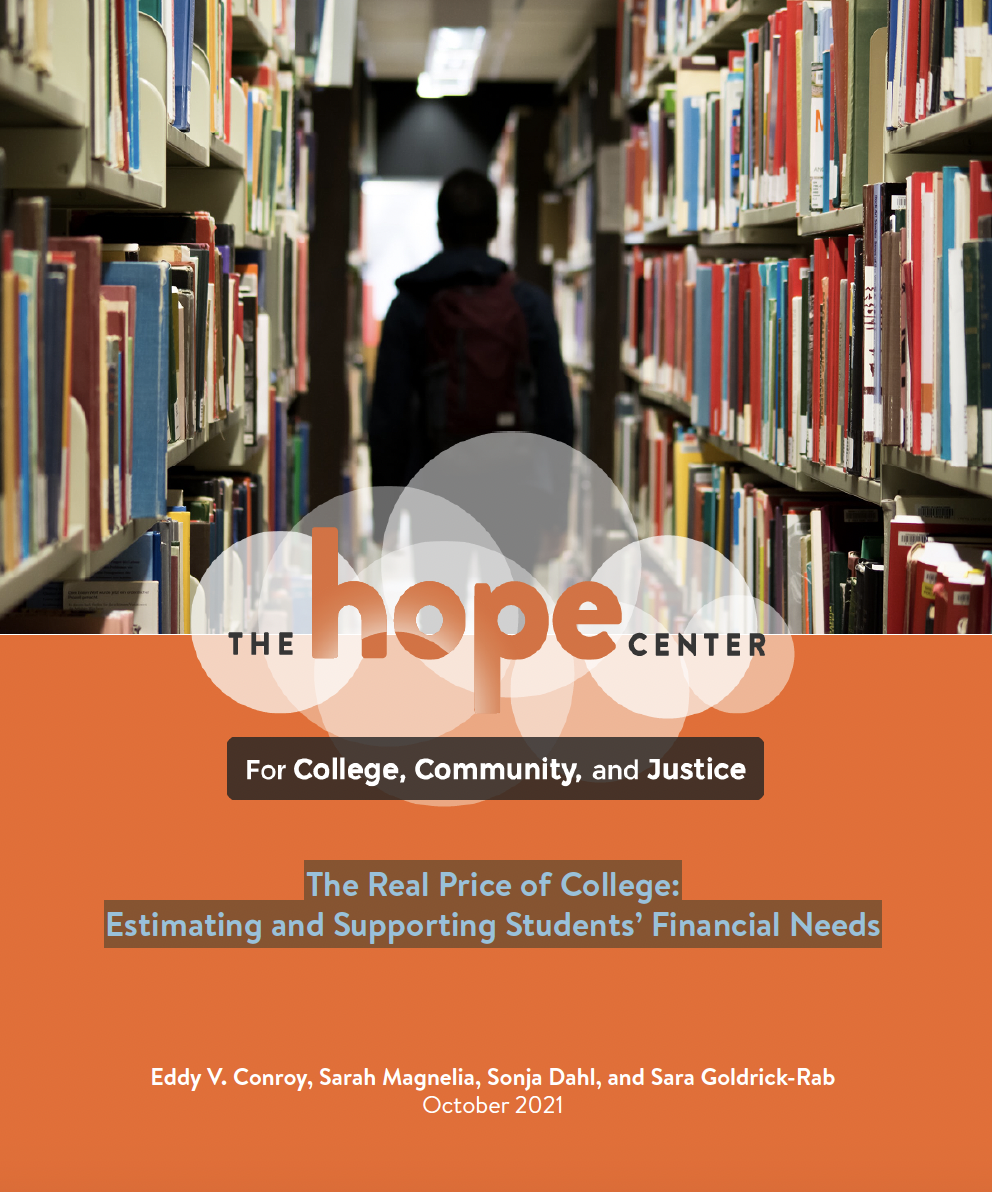Document Author: Eddy V. Conroy
#RealCollege During the Pandemic: Initial Institutional Responses to Address Basic Needs Insecurity (2020)
The novel coronavirus pandemic is testing institutions of higher education in unprecedented ways,
including challenging their ability to address basic needs insecurity among their students. With
the crisis ongoing as a new academic year begins, it is helpful to examine the response thus far.
The Hope Center developed a pandemic-oriented, institution-based survey that was administered
between April 9 and May 29. The survey yielded responses from 165 institutions in 36 states. The
results reveal:
• The number of students with basic needs insecurity on college campuses is substantial,
regardless of the method used to quantify such students.
• More than two-thirds of institutions said basic needs insecurity was discussed “a lot” or “a
great deal” on their campuses, and community colleges were more likely than four-year
institutions to view basic needs insecurity as a hinderance to degree completion.
• Nine of 10 respondents were looking for additional help to address students’ food and
housing needs, which were already areas of concern prior to the pandemic. And as
nationwide eviction moratoriums began to expire toward the end of summer, evidence
emerged that housing needs were increasing.
• A majority of institutions offered support to students seeking Supplemental Nutrition
Assistance Program (SNAP) benefits and had an active food pantry on campus.
• One hundred and seven institutions offered emergency aid. Three-quarters of those
institutions used online applications for their emergency aid programs, easing one of the
main challenges to effectively dispersing aid. However, institutions continued to struggle
with staffing and publicizing the programs, as well as meeting the increased demand solely
via fundraising.
• One in five institutions required students to complete a Free Application for Federal
Student Aid (FAFSA) in order to access emergency aid funds.
• Just three in 10 institutions helped students with basic needs insecurity apply for
unemployment insurance, despite widespread job loss among undergraduates.1
Faculty-Run Emergency Aid for Students (ND)
Note: This documented is now outdated and provided for historical purposes only. Please see Believe in Students (believeinstudents.org) for more information on running a FAST Fund.
The Real Price of College: Estimating and Supporting Students’ Financial Needs (2021)
For decades, complicated financial aid formulas and variable sticker prices have made it difficult for students to understand the real price of college. For colleges, understanding students’ financial need is also challenging; current financial aid formulas cause many students’ actual need to be understated.
This report examines what happens when:
financial aid leaders and staff better understand students’ financial need, as operationalized by negative EFC; and
students better understand college costs and how to advocate for more financial support.
Using data gathered at Temple University and six colleges and universities in Texas, we explore how more nuanced information about college costs and financial need can change beliefs and behavior among financial aid staff, leaders, and students.

